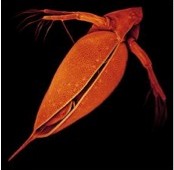Aureococcus genome project in Sify News
Algae play key roles in the global carbon cycle, sometimes helping sequester significant amounts of carbon but can also turn the ocean waters brown or green and disrupt an ecosystem. When billions of Aureococcus cells come together, they outcompete the other marine phytoplankton in the area, damaging the food chains in marine ecosystems as well… [Read More]
